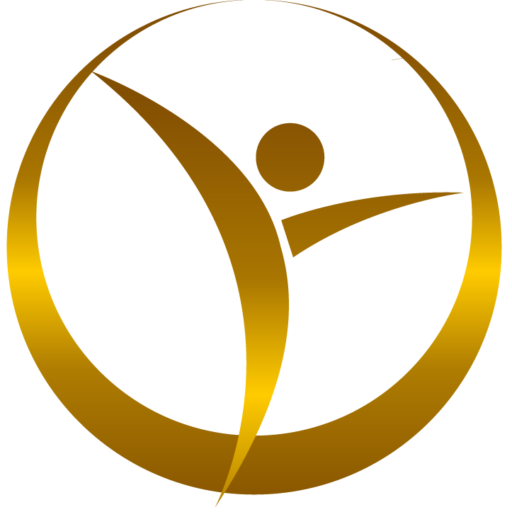What is Brain Stroke?
When the brain is deficient in oxygen and blood, stroke can be an inevitable occurrence. The reasons for the poor supply of oxygen and blood can be associated with multiple variables like metabolic syndrome and non-communicable diseases. (Prevent Brain Stroke, n.d.)
Types of Brain Strokes
Ischemic stroke: These are strokes caused by blockage of an artery. About 85% of strokes are all ischemic.
Hemorrhagic stroke: These are strokes caused by excessive internal bleeding and swelling. About 13% of strokes are hemorrhagic.
Transient ischemic stroke: A TIA usually lasts for a couple of minutes and does not cause long-term damage. However, this is to be identified a s arisk factor and care must be taken to prevent further attacks.
Brain stem cell: This happens when the blood supply to the base of the brain is stopped.
Cryptogenic stroke: Strokes without any unknown cause are called cryptogenic strokes.
Symptoms of Stroke
It is imperative to know and identify the symptoms of stroke. Lack of awareness about certain health conditions is more threatening than the disease itself.
- Identify the signs of numbness on one side of the body, especially in the face, arm, or leg.
- The patient might not be able to speak or understand.
- Blurred vision in one or both eyes.
- Lack of coordination and loss of motor control over the body.
- Symptoms like headache, indigestion, vomiting, and dizziness are also observed.
The Factors Affecting Brain Stroke
Stroke is a clinically defined syndrome of acute, focal neurological deficit attributed to vascular injury of the central nervous system.
There are multiple factors influencing the risk and occurrence of a stroke. Cerebral amyloid angiopathy (CAA), arteriosclerosis, cardioembolic stroke, and large artery disease are some of the major clinical diagnoses to understand how the event has occurred. (Murphy & Werring, 2020)
Age: It has been observed that people aged between 38 – 48 years are at a moderate risk of having a stroke and people from the age of 60 years and above are at a high risk of having a stroke. An increase in age is positively correlated to an increased risk of stroke.
Gender & ethnicity: It is observed in some communities that women have a higher risk of having a stroke than men.The reasons being, living alone and procrastinating the clinical addressal of any underlying issue that may lead to stroke.
Ethnicity is a non-modifiable factor that can influence the risk of stroke in both genders. Asian communities are seen to have a higher risk, especially China, India, Indonesia, Japan, Korea, and other countries. (Turana et al., 2021)
Genetics & family history: It is not a new fact how genetics have a huge influence over the diseases our bodies carry from the foetus by its very nature. Having parents and grandparents who have been suffering from metabolic syndromes and those who have suffered from the warning signs of stroke, increases the chances of their children and grandchildren with similar metabolic risks and warning signs with growing age.
Urbanization and lifestyle: With globalization and urbanization, there is a drastic shift in the lifestyles of people. An increased consumption of salt, sugar, trans-fats, and packaged goods has impacted health in many negative ways. This lifestyle change played a key role in initiating metabolic changes in the body, leaving space for non-communicable diseases.
Serum Uric acid: An elevated SUA can be a crucial factor in identifying a risk of having a stroke in the future. Many findings have shown that people with a high risk of stroke had higher levels of SUA compared with people with a low risk of stroke.
Hypertension: Hypertension can never be ruled out while we discuss the factors affecting stroke. High blood pressure (hypertensive state) is the biggest culprit behind strokes. Too much force in your blood vessels can damage your arterial walls making it harder for the blood to reach your brain. (The Terrifying Link Between High Blood Pressure and Stroke, n.d.)
Alcohol consumption: There is a positive correlation between alcohol consumption and the risk of stroke. This means, that more the alcohol is consumed by a person, the more he/she falls into the risk bracket for having a stroke.
Smoking: Smoking and the risk of stroke also have a positive correlation where with higher usage of tobacco, there are higher possibilities of having a stroke.
All the above-mentioned factors majorly influence metabolism like fatty liver, atherosclerosis, hypertension, and abnormal cholesterol and glucose levels, leading to non-communicable diseases like cardiac failure, stroke, cancer, respiratory disorders, diabetes, and others.
Brachial-Ankle Pulse Wave Velocity and Risk of Stroke
A health examination was conducted in China’s West China Hospital from July 2014 – Feb 2018. This was a retrospective study with a total of 31,464 and the sample population was divided into 3 groups to measure the risk of stroke.
Low risk, moderate risk, and high risk were the three groups divided by the assessments/observations made. Among the participants, 17,959 were at low risk, 11,825 were at moderate risk, and 1680 were at high risk of having a stroke.
Age, smoking, alcohol consumption, body mass index, uric acid, diastolic pressure, systolic pressure, triglycerides, low-density lipoprotein cholesterol, glucose, brachial-ankle pulse wave velocity (baPWV), and ankle-brachial index (ABI) were considered to be independent significant risk factors for stroke.
Brachial-ankle pulse wave velocity (baPWV) measures the systemic arterial stiffness that is measured by the brachial and the tribial arterial wave analyses. This is a non-invasive method that is extensively used to assess the risk of cardiovascular and coronary artery disease in patients.
The higher the percentage of baPWV measuring the arterial stiffness from soft to hard, the higher the risk of stroke has been observed in the sample population. This means, that when there is a higher percentage of arterial stiffness, it is observed that there are higher chances of having a stroke. (Li et al., 2019)
Ankle-brachial Index (ABI) And Risk of Brain Stroke
Ankle-brachial index (ABI) is also used to measure and assess arterial stiffness, which helps to diagnose peripheral arterial disease to identify the risk of stroke This technique has been used in the sample population. (Li et al., 2019)
The ABI is the ratio between the systolic blood pressure of the lower limb (specifically at the ankle) and the upper limb, to assess for narrowing or blockages in the arteries in the legs.
People with a low risk of stroke showed an increasing percentage of ABI from normal to clogging, whereas people with a moderate risk of stroke showed a decreasing percentage of ABI from normal to clogging overall.
This means reduced blood flow from the lower limb to the upper limb can increase the chances of stroke in the sample population.
Metabolic Syndrome vs Brachial-ankle Pulse Wave Velocity
Metabolic syndrome has been significantly associated with the brachial-ankle pulse wave velocity and blood pressure variability. A long-term increase in metabolic syndrome is positively correlated to an increased risk of stroke.
This shows how blood pressure variability, triglycerides, cholesterol, glucose levels, and inflammation can have a huge impact on the occurrence of stroke. (Wang et al., 2016)
Tips to identify and help people suffering from brain stroke
Act F.A.S.T is a smart mnemonic to identify and assist a person in a suspected event of stroke.
F – Check for FACE dropping.
A – ASK the person to lift their ARM.
S – Are they able to SPEAK?
T – TIME to call for help.
You can ask the person to smile and talk, ask them to lift their arm or leg, and test their vision to check for symptoms. These tips are often used in medical emergencies. If you observe there is no reciprocity in their speech, consciousness, and hand-eye coordination, it is time to call for help.
Key points
Stroke is caused by a mixture of non-modifiable and modifiable factors. While genetic reasons are inevitable, practicing a healthy lifestyle can have a positive impact on your health by building better epigenetics and guiding your body to bring down the graph from a higher risk to a lower risk of stroke.
By engaging in a healthy lifestyle, one can avoid metabolic disturbances like elevated triglycerides, glucose levels, lipoproteins, cholesterol, and blood pressure. Which ultimately protects you from the risk of many non-communicable diseases including stroke.
References
- Li, R. C., Xu, W. D., Lei, Y. L., Bao, T., Yang, H. W., Huang, W. X., & Tang, H. R. (2019). The risk of stroke and associated risk factors in a health examination population: A cross-sectional study. Medicine (United States), 98(40). https://doi.org/10.1097/MD.0000000000017218
- Murphy, S. J., & Werring, D. J. (2020). Stroke: causes and clinical features. Medicine (Abingdon, England : UK Ed.), 48(9), 561. https://doi.org/10.1016/J.MPMED.2020.06.002
- Prevent brain stroke. (n.d.). Retrieved April 20, 2024, from https://www.who.int/southeastasia/news/detail/29-10-2016-prevent-brain-stroke
- The Terrifying Link Between High Blood Pressure and Stroke. (n.d.). Retrieved April 21, 2024, from https://www.webmd.com/hypertension-high-blood-pressure/hypertension-high-blood-pressure-stroke
- Turana, Y., Tengkawan, J., Chia, Y. C., Nathaniel, M., Wang, J. G., Sukonthasarn, A., Chen, C. H., Minh, H. Van, Buranakitjaroen, P., Shin, J., Siddique, S., Nailes, J. M., Park, S., Teo, B. W., Sison, J., Ann Soenarta, A., Hoshide, S., Tay, J. C., Prasad Sogunuru, G., … Kario, K. (2021). Hypertension and stroke in Asia: A comprehensive review from HOPE Asia. The Journal of Clinical Hypertension, 23(3), 513. https://doi.org/10.1111/JCH.14099Wang, A., Su, Z., Liu, X., Yang, Y., Chen, S., Wang, S., Luo, Y., Guo, X.,
- Zhao, X., & Wu, S. (2016). Brachial-ankle pulse wave velocity and metabolic syndrome in general population: the APAC study. BMC Cardiovascular Disorders, 16(1). https://doi.org/10.1186/S12872-016-0409-X






